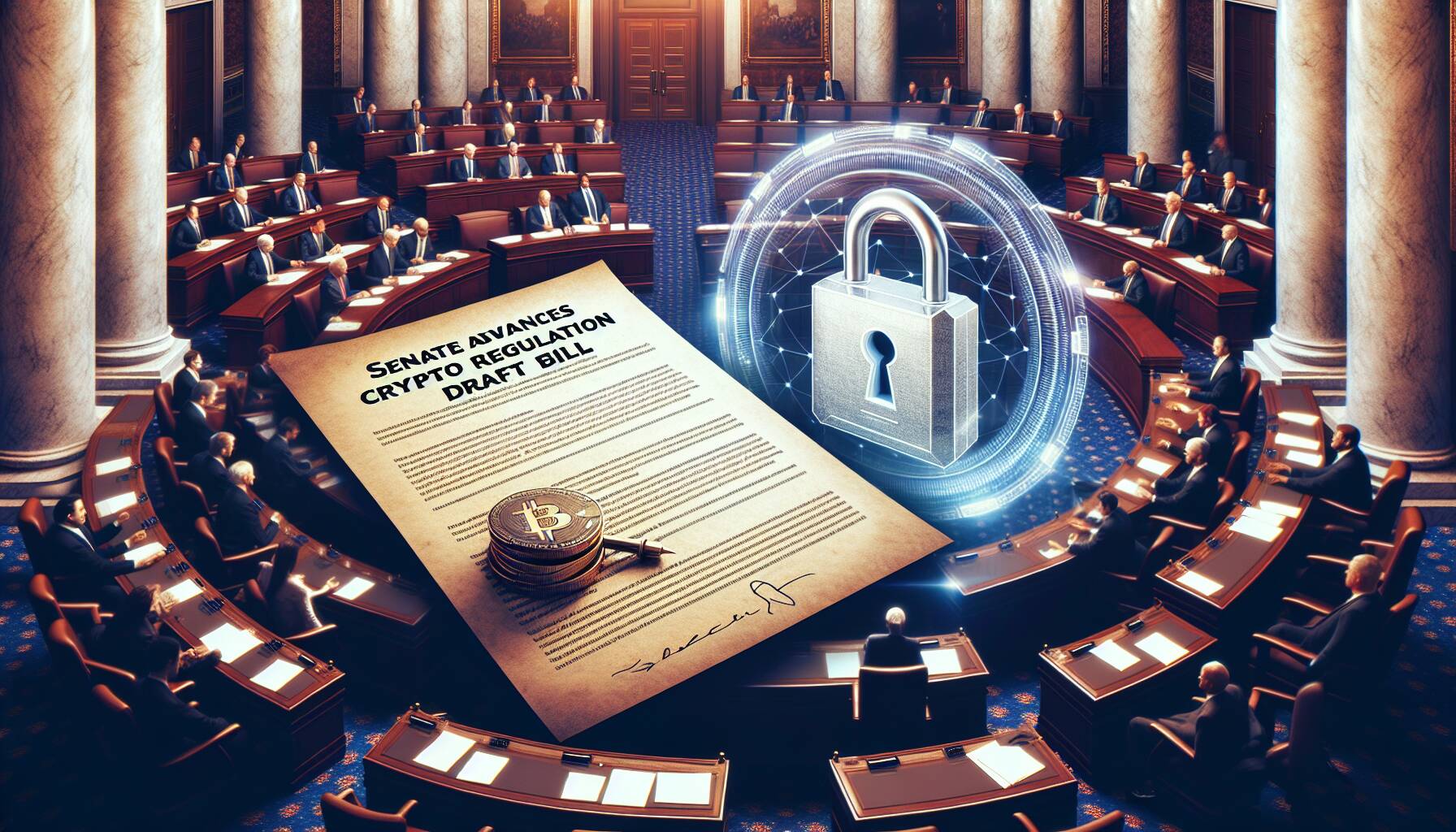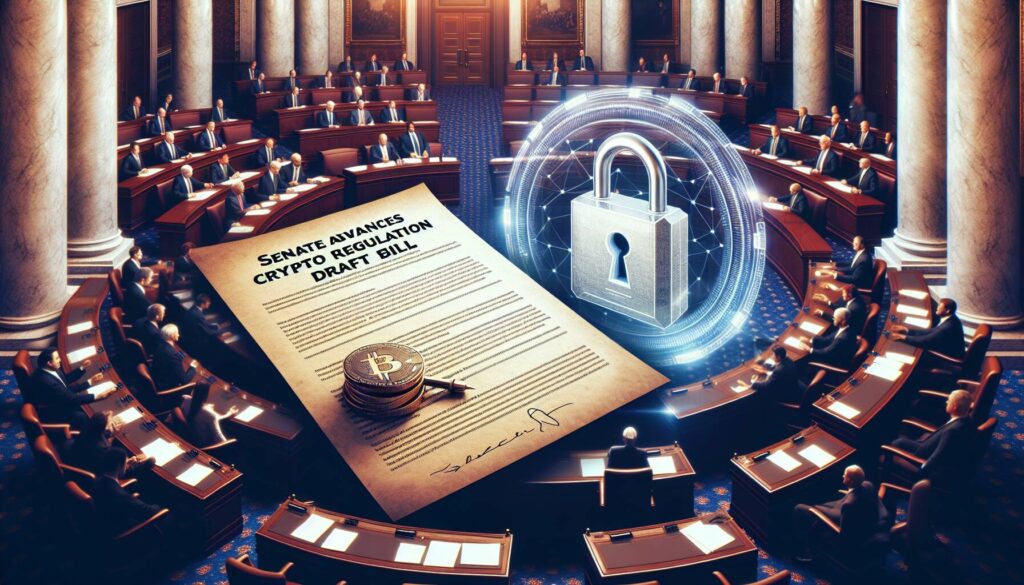The U.S. Senate is making significant strides in shaping the future of the cryptocurrency industry with the latest advancements on a crucial legislative initiative. This past Friday, the Senate circulated a new draft bill that delineates protective measures for crypto developers and outlines bankruptcy guidelines for various digital asset issuers. This development follows the U.S. House of Representatives’ earlier passage of the Digital Asset Market Clarity Act, which laid the groundwork for setting a clear regulatory framework for crypto markets.
The draft bill, obtained by CoinDesk, proposes legal safeguards for those involved in the creation and management of distributed ledger systems and decentralized finance platforms. In a noteworthy addition, the legislation seeks to amend existing bankruptcy laws to encompass “ancillary assets,” ensuring that these digital commodities are treated as customer property during bankruptcy proceedings.
“Despite its progress, the bill still faces the challenge of garnering support from both Republican and Democratic senators, particularly in a politically charged environment where securing 60 votes is essential for advancement.”
While the House’s version made considerable headway with bipartisan backing, the Senate’s initiative intends to refine and potentially expand upon those concepts, addressing key issues such as the transition of a crypto asset from security to commodity status. The timing of this legislative process remains uncertain, with previous deadlines having been missed. Senate Banking Committee Chairman Tim Scott has aimed for timely action, yet competing priorities like budget demands continue to influence the legislative agenda.
As Congress returns from its recess, the focus on crypto regulation reflects a strong bipartisan commitment to establishing a sound framework for the increasingly vital digital asset landscape. With a full plate of legislative items ahead, crypto remains a top priority, holding promise for significant developments in the coming weeks.

Overview of U.S. Senate’s Crypto Regulation Bill
The recent developments in the U.S. Senate regarding the regulation of cryptocurrency could significantly impact the crypto industry and its participants. Here are the key points:
- Advanced Bill Draft: A new draft bill circulates, focusing on protections for crypto developers and bankruptcy guidelines for digital asset issuers.
- Digital Asset Market Clarity Act: The House’s recent bipartisan approval of this act has set a foundational framework for crypto market structure.
- Legal Protections for Developers: The bill aims to provide legal safeguards for parties involved in the development and distribution of decentralized systems.
- Bankruptcy Guidelines: Amendments clarify the treatment of ancillary assets and digital commodities during bankruptcy, emphasizing their classification as customer property.
- Bipartisan Support Challenges: While the House has shown strong bipartisan support, the Senate requires a greater consensus, needing at least 60 votes to pass.
- Core Issues of Regulation: A significant focus is on determining how crypto assets transition between being categorized as securities and commodities, affecting regulatory authority.
- Impact on Market Operations: The progression of this legislation could alter how digital asset businesses operate, influencing legal compliance and market dynamics.
- Timelines and Legislative Process: While there are targeted timelines for passage, the final approval process involves votes from both chambers of Congress.
Developments in crypto regulation are pivotal; they could establish a structured environment that fosters innovation while ensuring consumer protections.
Comparative Analysis of U.S. Crypto Regulatory Developments
The recent advancement of the U.S. Senate’s crypto regulatory bill highlights critical strides in outlining protections for crypto developers and restructuring bankruptcy considerations for digital asset issuers. This contrasts significantly with the earlier passed Digital Asset Market Clarity Act by the House, which functions more as a foundational framework rather than an exhaustive legal guide. While the House’s version celebrated bipartisan support with a decisive 308-122 vote, the Senate’s path appears more intricate, necessitating at least 60 votes for passage due to their distinct legislative protocols.
Competitive Advantages: The Senate’s newly circulated draft bill showcases a deeper level of detail, specifically in the provisions for decentralized financial systems and customer property clarifications during bankruptcy. This level of detail could reassure investors and developers alike, fostering a more stable regulatory environment conducive to innovation. Furthermore, the Senate’s efforts to develop comprehensive legal frameworks signal potential leadership in digital asset regulation, positioning the U.S. as a forward-thinking player in the global crypto landscape.
Competitive Disadvantages: However, the Senate’s reliance on garnering Democratic support could prove challenging, given the contrasting perspectives on crypto regulation. The necessity for extensive negotiations and possible amendments may slow the finalization of the bill, creating uncertainty in the market. Additionally, discrepancies between the Senate and House approaches—particularly regarding the classification of crypto assets—may lead to confusion and inconsistencies in the application of the law, hampering compliance efforts for businesses operating within the sector.
Both bills serve to benefit a variety of stakeholders: developers, who will gain clearer guidelines and protections; investors, who will appreciate the move towards greater legitimacy in the market; and potentially even end-users, who could see enhanced consumer protections. Conversely, regulatory compliance burdens may be intensified for smaller firms, which could struggle to keep pace with evolving legislative requirements. The overlapping yet distinct legislative efforts of the Senate and House may inadvertently create hurdles for market participants as they navigate the complexities of compliance amid rapid regulatory changes.















